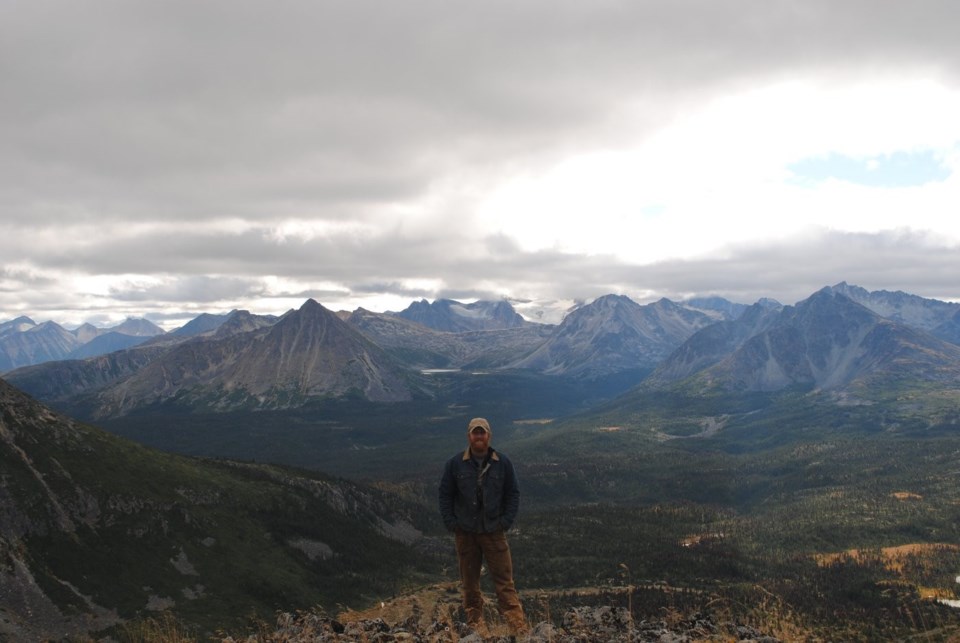Canfor served notice to forest stakeholders on its five-year ‘pest management plan’ for harvested forest blocks around the Prince George region, but wouldn’t reveal which specific tracts of Crown land are being considered for glyphosate herbicide aerial spraying until after a plan is confirmed, according to an emailed response from the company.
Meanwhile, local forestry stakeholders weighed in with concerns about using glyphosate and the government regulations that encourage it.
“The main issue here is the natural reforestation processes that are being circumscribed, or sidestepped, to create these primarily conifer monocultures,” said James Steidle, founder of Stop the Spray BC, based in Prince George. “That's a problem because we need diversity.”
Forestry management stipulates replanted forests must be 95 per cent conifer. Timber companies are responsible for replanted trees until they reach the ‘free-to-grow’ stage, when they can survive on their own. To speed growth of new conifers, glyphosate solutions are sprayed from planes across massive cut blocks to wipe out deciduous competition.
“It's not based on (ecological) science,” said Steidle. “It's based on the science of agriculture, an agricultural mindset to maximize yields.”
Mike Morris, Liberal MLA for Prince George-Mackenzie, has lived, hunted, fished and trapped in the Prince George Timber Supply Area (TSA) for upwards of 50 years. During that time, he’s seen dramatic effects from logging and spraying.
Forests in the northern interior naturally have a range of deciduous trees and plants, said Morris. “Glyphosate kills that and virtually eliminates all wildlife populations within the area being sprayed,” said Morris. “It's pretty tragic.”
Clear cut logging, single species silviculture practices, and glyphosate spraying have had dire consequences on species populations and forest biodiversity, he said, noting about 90 per cent of the area in his 800 square mile trapline has been clear cut.
Canfor is the largest timber company operating in the Prince George TSA with an annual allowable cut of nearly four million cubic metres.
There has been more disturbance on the landscape in the last 15 years than ever before, yet no higher level plan guiding us, said Fraser MacDonald, a wildlife biologist, rancher and co-owner of Circle M Outfitters in the Mackenzie area. "A lot of the public intuitively believes we have a plan for what we do on the land base. There isn't."
There are very clear legislative objectives around forest harvesting and replantation, but for any other values, there's nothing, said MacDonald.
“Right now, they manage for timber, for fiber, said Don Wilkins, a trapper in the Purden Lake area. “What they need to do is manage for a forest.”
Leaving more deciduous growth would create leaf litter, building up soils, allowing trees to grow better. Timber companies wouldn't have to fertilize them, Wilkins said. “And they wouldn’t have to spray.”
Canfor has reportedly adjusted aerial spraying in isolated instances, representatives wouldn’t comment on whether stakeholder opposition would influence its practice in the Prince George area.
Other timber companies have taken a different approach.
When Carrier Lumber got public pushback on plans to aerial spray in the Robson Valley, the operator changed course.
“We said, we get it, we hear you, we'll stop aerial spraying because it’s kind of indiscriminate how it affects everything,” said Bill Kordyban, president and owner of Carrier Lumber, which employs 350 people across its harvesting, milling and fabrication operations in Prince George and Saskatchewan. “We'll still do some spraying, but it'll be manual backpacks; it'll be targeted.”
The largest timber harvesting player in the Robson Valley, Carrier’s annual allowable cut in the Prince George TSA is about one-tenth that of Canfor.
“It's not totally fair to have public opinion increase your costs more than your competition, who's still continuing to do it,” said Kordyban. “I want to respect public opinion, but it gets to the point, we're being responsible, but we're being financially squeezed.”
If government allowed more deciduous vegetation, Carrier wouldn’t need to spray, said Kordyban.
“There is definitely public opinion in this valley to not spray, especially on forestry blocks,” said Roy Howard, executive director of the conservation group Fraser Headwaters Alliance, based in Dunster. “But the company shouldn't be stuck with that. Mostly, forest management has to change.”
Outside of parks and private land, standing timber is managed to be cut and replanted as a high-density forest, said MacDonald. Which is fine if the public wants B.C.’s forests to become a tree farm for licensees, he said.
“But I don't think we've ever made that decision."




